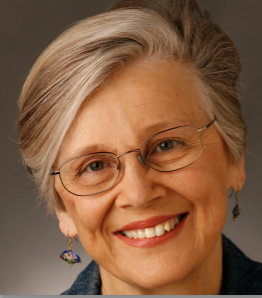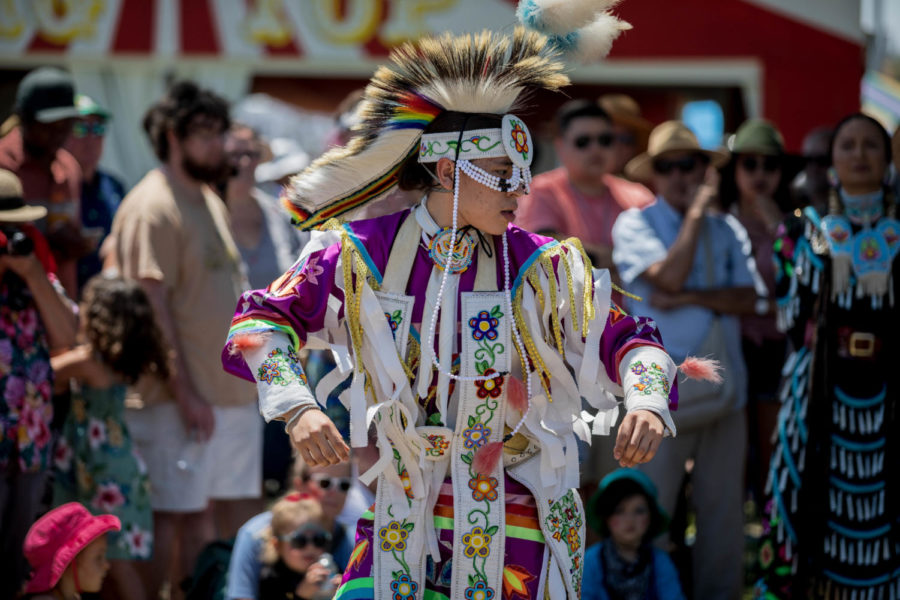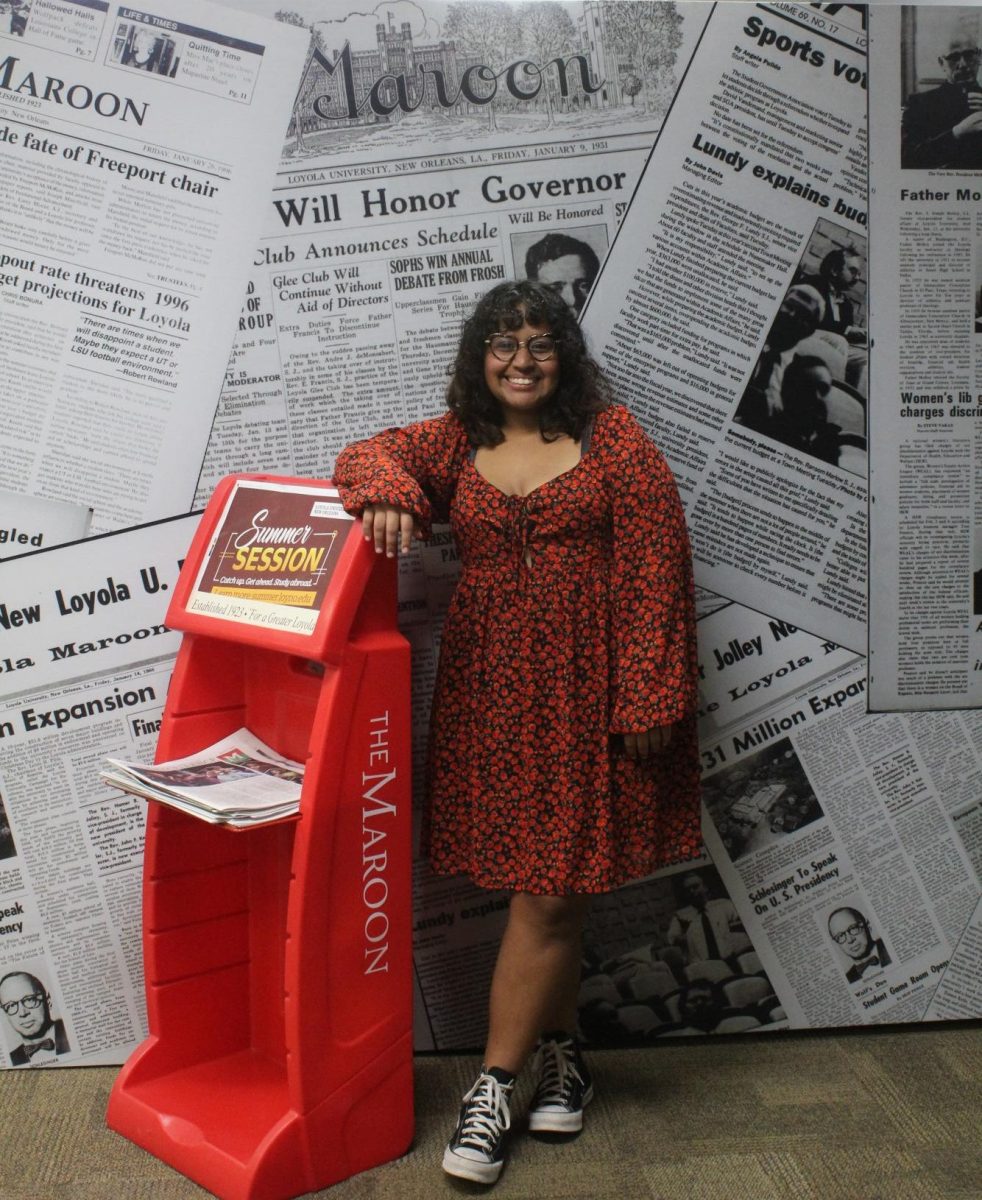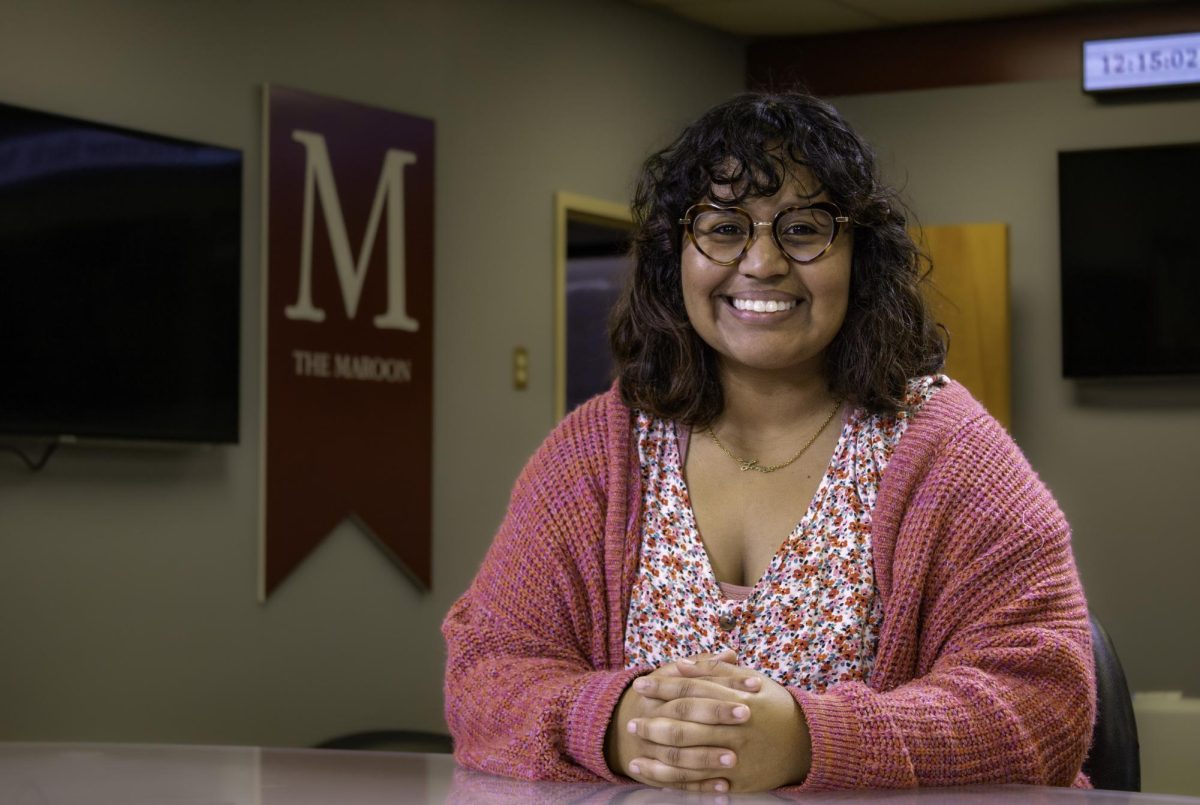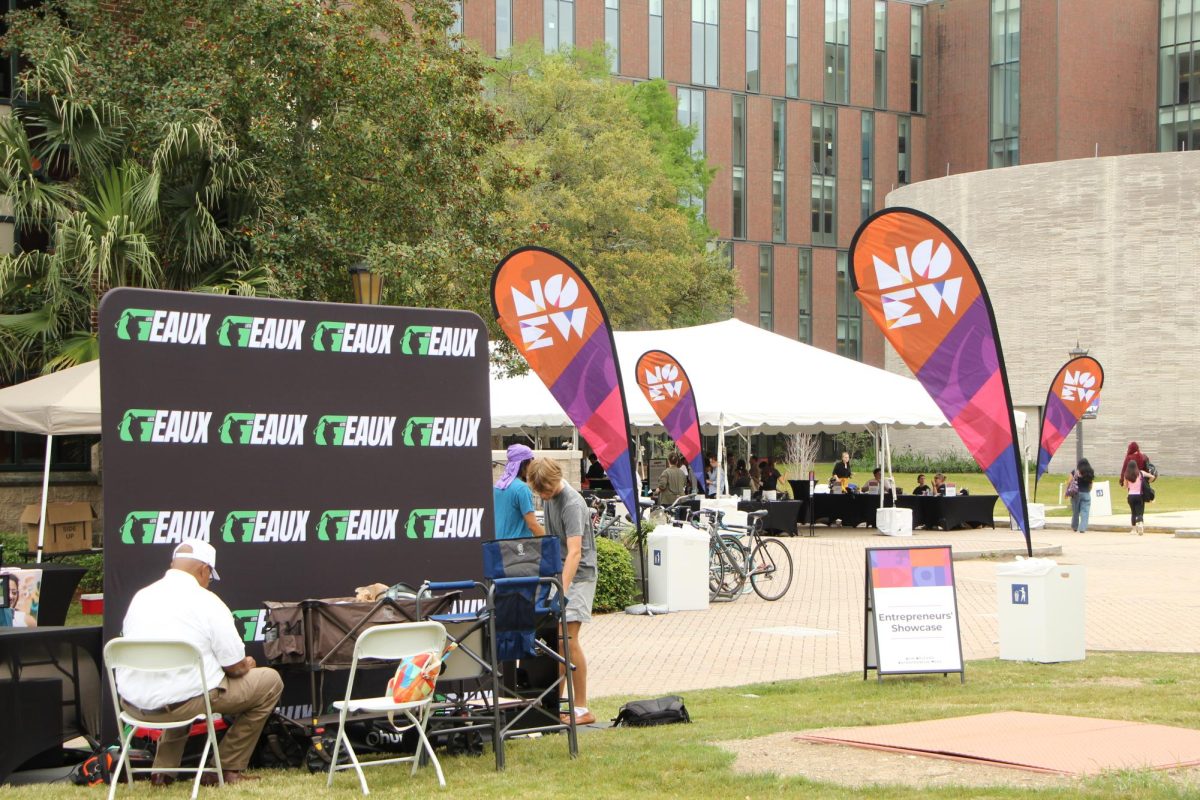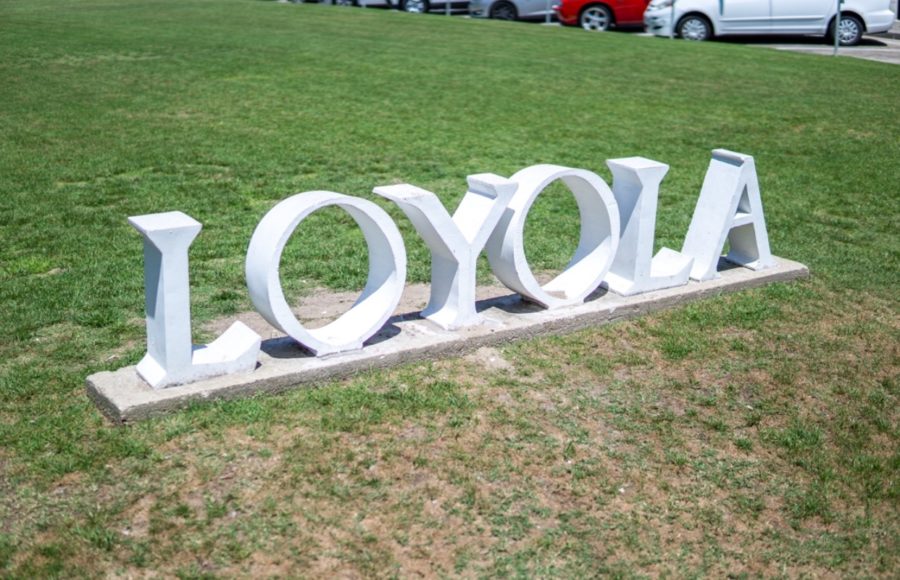The sixties arrived late at Loyola. When I was a freshman in 1960, we were still firmly in the ’50s – think Mad Men. We teased our hair; we drank; we smoked cigarettes but not weed, and if we had sex, we denied it. People thought the aspirin-between-the-knees joke was funny. Roughly 75 percent of Loyola’s 3,000-plus students were Catholic. We attended daily Mass at Holy Name of Jesus Church, and regularly slunk into its confessionals after lively weekends. The sexual revolution was coming, but not just yet.
Men made up almost 65 percent of the student body. They were subject to the draft, but they could defer it while they were in college, and sometimes wiggle out of it altogether if they got married and had a family.
So our generation fixated on dating: exchanging high school rings, eyeballing potential mates at fraternity parties. No gap year for us. We were on the fast track to holy matrimony and babies. I would give birth to four before I was 30. Once married, a woman disappeared behind her husband’s name. Maroon editor Kit Harger took a job with the Loyola public relations department when she graduated. She also got married. Her picture in the staff section of the 1963 yearbook was captioned: “Mrs. Fred Lipps.” No more Kit.
But change, it was a-coming. In my second semester at Loyola, dear old Ike Eisenhower turned the country over to the heartthrob-handsome John F. Kennedy, who mesmerized us. When he rode in an open-top convertible along St. Charles Avenue and right past Loyola in May of 1962, we cut classes to line the street. We all applauded as he passed, and some women shrieked. I was embarrassed for them. He wasn’t Elvis, for God’s sake.
I had joined The Maroon by then, and six months later, I was in the office at an Underwood typewriter pounding out some gossipy story, when someone rushed in screaming that Kennedy had been shot. We all dropped what we were doing and huddled around the radio. It was true. The impossible had happened in America.
Rosemary Ruiz, our editor, dispatched us to document Loyola’s reaction in photos. We were journalists and we had a job to do. It was the first hint that our world was shifting. . More and more young men – even some who belonged to Loyola’s own Reserve Officers Training Corps. – began to resist the whole idea of forced military service. They would initiate a decade of turmoil before the draft ended.
The birth control pill, which had come on the market in 1960, made its way south. Loyola students stopped being in such a hurry to get married. Young women deflated their towering hair styles and let it hang long and straight; men grew unmilitary beards. Misbehaving meant getting high instead of drunk. But by the time all that happened, I had graduated and gotten married. I read Betty Friedan’s “The Feminine Mystique” in an obstetrician’s waiting room. (Really. I already had toddlers at home, and the doctor’s waiting room was relatively peaceful.)
At Loyola, I had learned, in addition to the importance of Christian marriage, to be a journalist. I had managed to become Maroon editor in my senior year. I loved it; thrived on it. Of course, I loved my babies even more. But now – thank you, Ms. Friedan – I decided to go for both, and took up freelance writing in addition to motherhood and wifehood. This meant, down the line, that I wouldn’t have the shiniest kitchen floors in the suburb. And the red beans we ate on Mondays were Blue Runner out of the can. Stuff like that. But the kids -eventually there were six – were fine.
I gradually worked my way to writing full-time, and noticed that my fellow female writers tended to establish their careers first, then have their families. They have that choice now. But things worked out well for me, doing it the way I did, and in 1993 I came back to Loyola to teach journalism, and I became The Maroon adviser.
The world of Mad Men was long gone. May it never return.
Liz Scott Monaghan, A’64, is a former Maroon editor and adviser. She can be reached at modine@aol.com
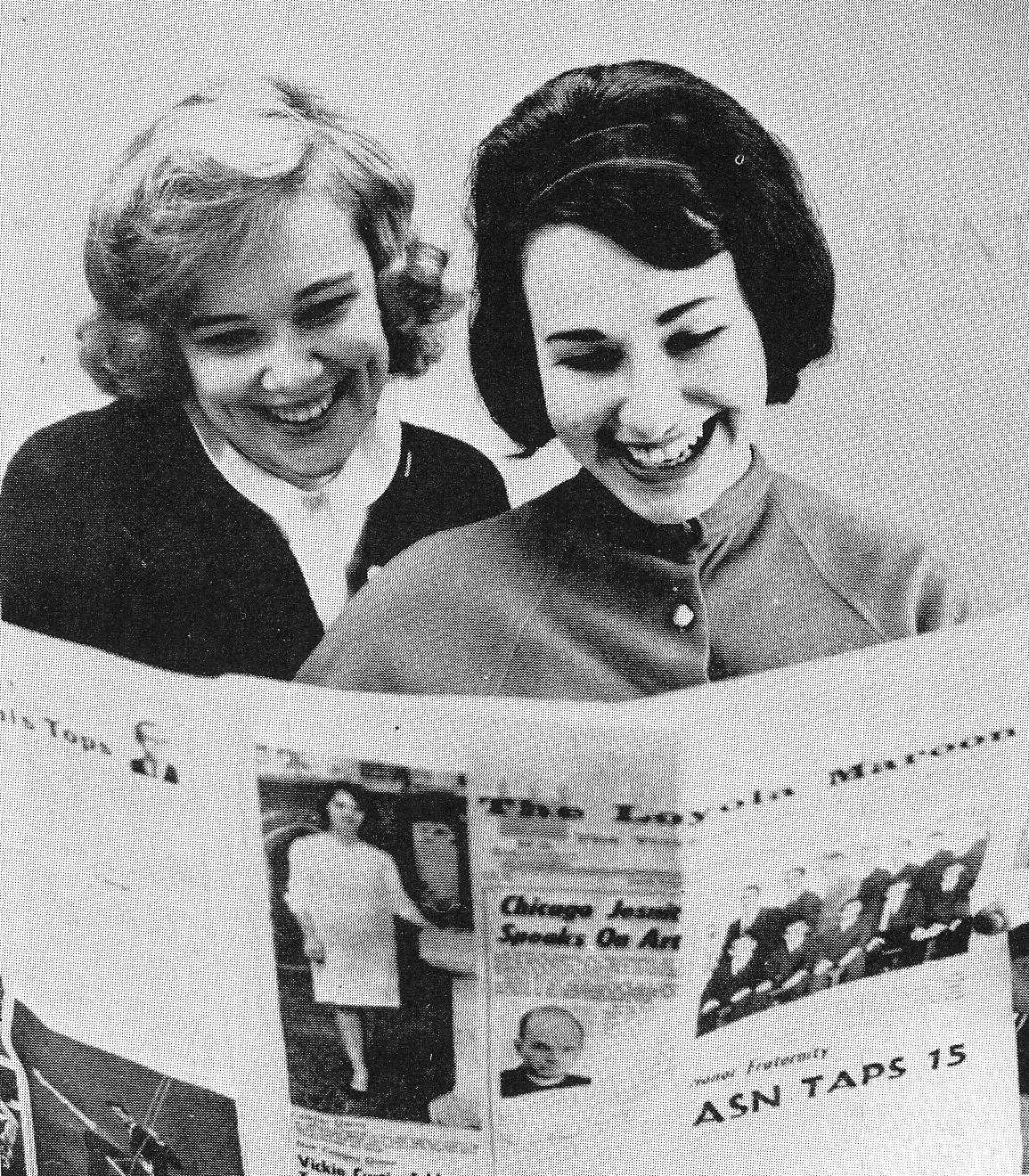
The finished product! “There’s a certain good feeling when you see the paper in its finished form. It seems to make all the effort worthwhile after all,” say editors Liz Brodrick (Scott Monaghan) and Gwen San Marco (Wolf 1964)


